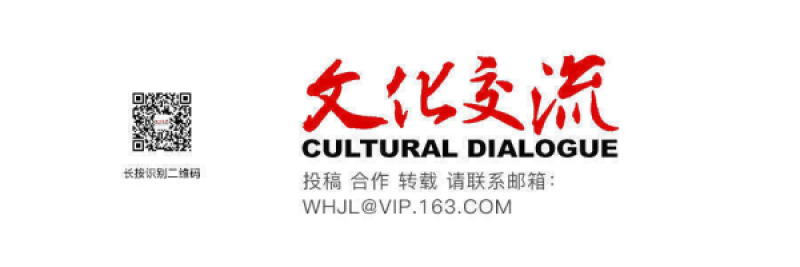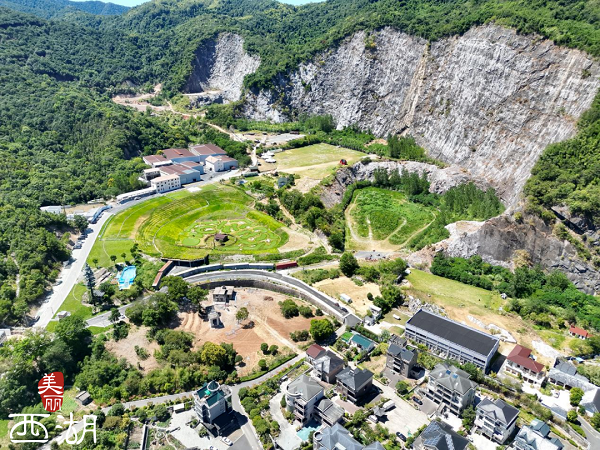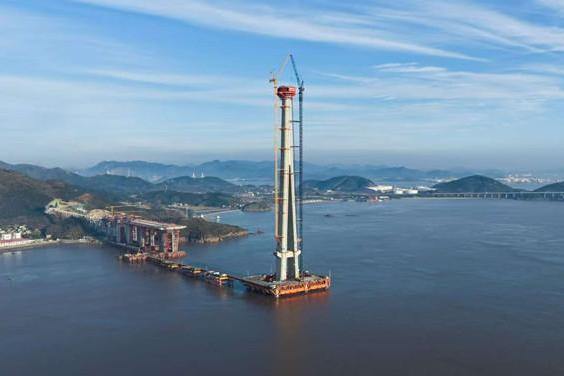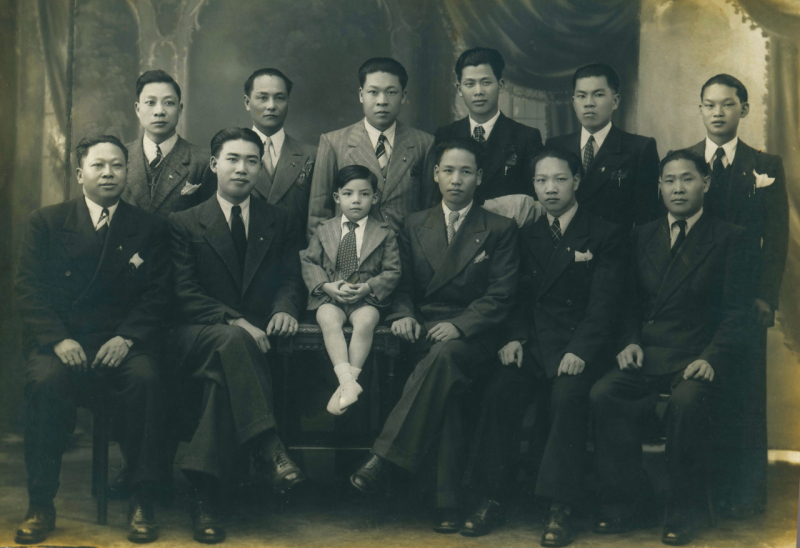
Overseas Chinese of Qingtian origin in the old days.
On the wall of Qingtian Overseas Chinese Exhibition Hall there are a few old photos in black and white, quietly telling the faded memory of the past. Most of the people in the photos are dressed in a Western style with sharp suits and shiny leather shoes, obviously gentleman-like in the old days, which set visitors wondering: compared to their counterparts, what is so unique about the overseas Chinese of Qingtian origins?
"First, it is worth noting that the history of the Qingtian overseas Chinese does not start from building railroads or digging gold mines, but from business, so the most typical image about an overseas Chinese of Qingtian origin is a businessman," explained Yan Xiaohai, a scholar in Qingtian county of Zhejiang's Wenzhou city specializing in the history of overseas Chinese. "Because it is always necessary to look decent while doing business, overtime, for the Qingtian overseas Chinese suits gradually became an important means of livelihood."
It is the job of the Overseas Chinese Historical Statistics Collection Office of Qingtian County to identify the people in the old photos by contacting their descendants and restore each of their stories which have been buried deep for ages. Thanks to their persistent efforts since years ago, the history of the Qingtian overseas Chinese has been enriched gradually and their general characteristics have been slowly shown to the public.
A scholar once described the Chinese who went abroad in the modern era in this way: those who headed to the West were mostly sons of noble families; those who headed to the East were mostly intellectuals and revolutionaries; and those who went to the South were mostly poor people. It was not until we ran into the history of Qingtian overseas Chinese did we discover that there was a group of Chinese who went to the West with no official background and little wealth but only bare hands and a bright mind. Europe thus became their major destination, nurturing a unique culture for the Qingtian overseas Chinese.
"Europe has become the center of the world since modern times, therefore the emigration history of Qingtian people is actually closely related to the world history, especially the history of the 20th century," which is how Yan puts it. In his research, the course of history as a whole could always be observed through some story of a single family.
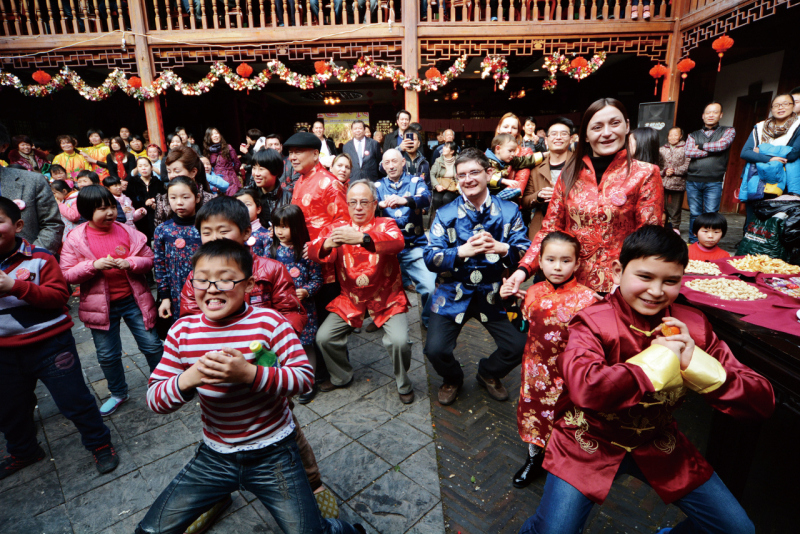
Qingtian county, the Chinese county that is "closest" to Europe.
As early as in the late Qing dynasty (1616-1911), a small number of Qingtian people went overseas to make a living, facing unimaginable hardships and dangers without doubt.
After 1911, Qingtian saw the first peak of its people going abroad, and the number of Qingtian people going to Europe between World War I and World War II increased exponentially. After the founding of People's Republic of China, the number decreased until the second climax appeared right after the Reform and Opening-up. Settling down overseas, those Qingtian pioneers either set up companies helping the locals get rich together, or returned to China to make investments and start their own business, in line with the pace of globalization. By leveraging the abundant resources and cheap labor in China, they have managed to link up the industries at home and abroad, and sell the "Made in China" merchandises to the rest of the world.
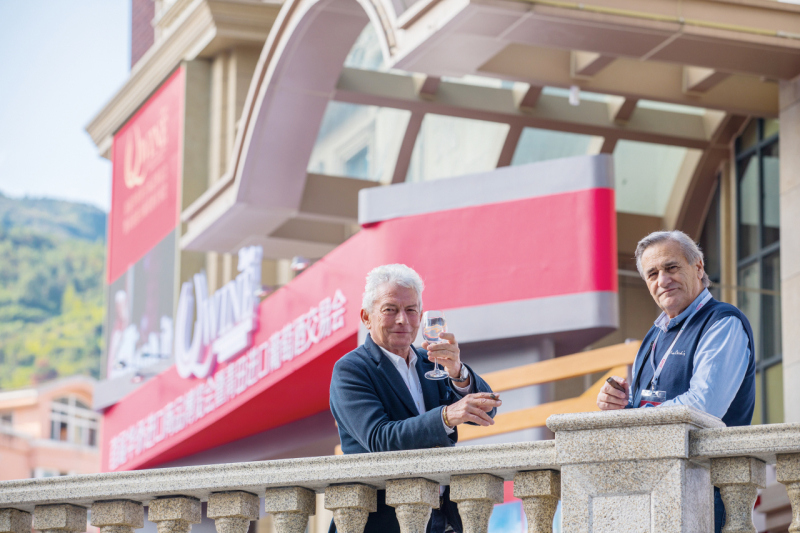
The first Qingtian International Wine Exhibitions, or the QWine Expo, was held in 2018, attracting exhibitors from around the world and buyers from all over China.
In addition, overseas Chinese of Qingtian origins have spared no effort to realize the peaceful reunification of China. In 2000, the "Global Overseas Chinese Conference for the Peaceful Reunification of China" was established to promote the peaceful reunification movement of overseas Chinese worldwide.
So far, among the population of 540,000 in Qingtian, there are 330,000 working and living abroad, so it is safe to say that for Qingtian people, "there are overseas settlers in every household and everyone is a relative to an overseas settler". The number of countries and regions where Qingtian folks have settled down has increased from slightly over 40 to 128: from Spain, Italy, France, Austria, the Netherlands to Russia, Poland, Hungary and even many South America countries like Brazil, Paraguay, etc.
The Qingtian people are so well traveled that they are often called the "Jews of the East". However, they themselves simply do not agree with this, for the Jews, as they believe, were forced into a dispersed migration in ancient times for historical reasons. Qingtian people are actually very proud of the fact that their ancestors did not leave their homeland because they were forced to, but because they were eager to fight against their fate.
In fact, the history of Qingtian overseas Chinese is also a history of Qingtian people trying to get out of their mountainous land. If you take a look at the geographic statistics of Qingtian, you can see how harsh the natural conditions are set for this place: the total area of Qingtian county is 2493.34 square kilometers, where the mountains account for 89.7%, streams, rivers and ponds account for 5%, and arable land only accounts for 5.3%. This extremely harsh environment has left them practically nothing to live for.

An aerial view of Qingtian county at night.
The history of overseas Chinese in Qingtian is also closely related to stone carvings. Brought overseas by Qingtian businessmen, they have been well received, paving the way for large-scale international trade afterwards.
With the growing fame of Qingtian stone carving, the overseas demand has further made the Qingtian people determined to go abroad to make a living out of this local treasure. On the other hand, the export of stone carvings has contributed to the improvement of Qingtian stone carving techniques and the cultivation of talent in the industry, which has given Qingtian the reputation of "the hometown of stone carving".
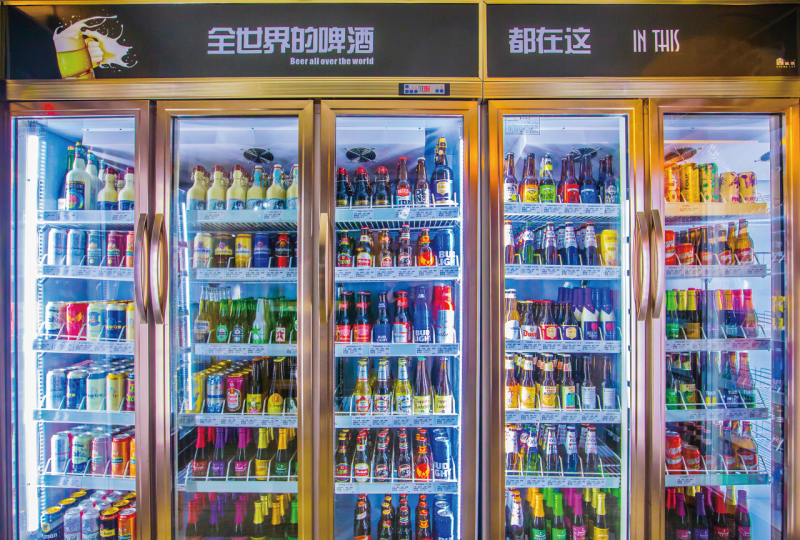
Beers from around the world are gathered in Qingtian county.
Qingtian is often referred to as the county "closest" to Europe in Zhejiang. The harmonious fusion of the European style and local rural scenery has become another distinctive characteristic of Qingtian.
The cultural combination of East and West has long been influencing the lifestyle of Qingtian people. Here, you can stroll through a Roman-style square, sip a cup of rich Italian espresso, and spend a romantic Prague-like afternoon in leisure; you can also taste braised fish in a restaurant hidden in the mountains, and explore a poetic way of living in the nature; you can do some global shopping, and buy imported goods at prices just like in their countries of origin; you can also experience the profound culture from Qingtian stone carving and seals.
In Qingtian, there is such elegance coming in both a Western way and an East way, creating a unique atmosphere of international modernity and rural hospitality combined.

Linjiang Road, dubbed the “European-style Street”, in Qingtian county.
As a kind of solidified art, Qingtian's architecture can also visually reflect the style derived from the century-old practice of emigration. The European-style buildings of different eras and in various forms are hidden all over the county, including Huaqi Street, Yutang Villa, Linjiang Road and New Street. In the countryside, churches and Western-style buildings coexist with local temples and Taoist temples; in the downtown, the blue-domed Land Office, Mediterranean-style banks, German-style houses can be seen with other buildings in Baroque, Neoclassical and Victorian styles, harmoniously together in the small county of Qingtian.
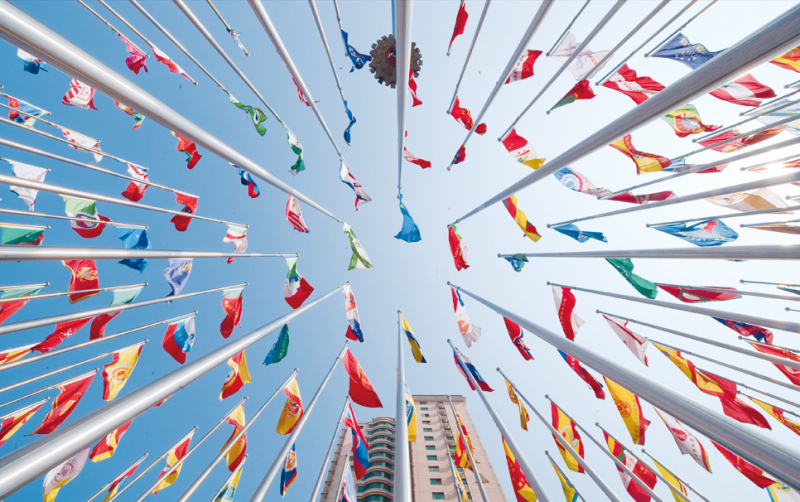
Hundreds of flags are raised in the square of the Qingtian Railway Station.
Editor: Li Qiaoqiao
